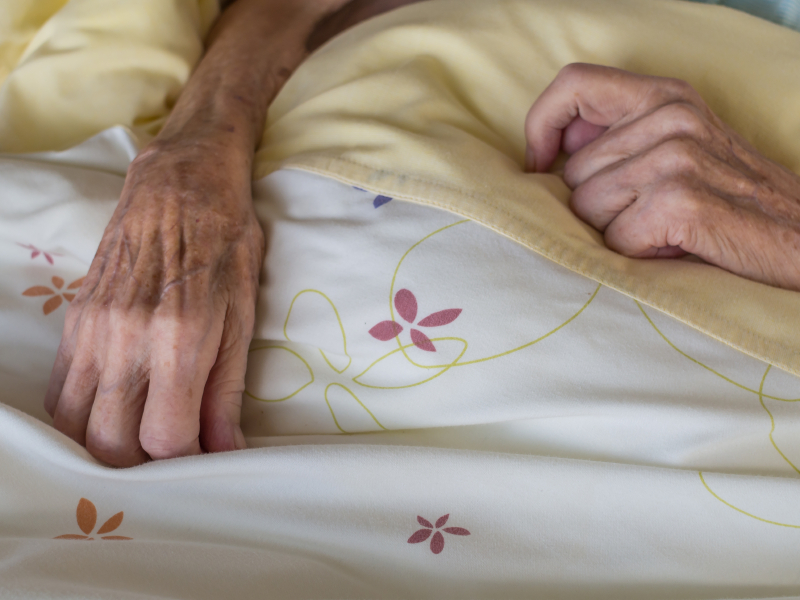AARP Eye Center
Study: Suffering Increasing at the End of Life
By Jenny Gold, Kaiser Health News, February 3, 2015 02:18 PM
It’s been more than 15 years since the Institute of Medicine released its seminal 1997 report detailing the suffering many Americans experience at the end of life and offering sweeping recommendations on how to improve care.
So has dying in America gotten any less painful?

Despite efforts to build hospice and palliative-care programs across the country, the answer seems to be a resounding no. The number of Americans experiencing pain in the last year of life actually increased by nearly 12 percent between 1998 and 2010, according to a study released Monday in the Annals of Internal Medicine. In addition, depression in the last year of life increased by more than 26 percent.
That’s the case even though guidelines and quality measures for end-of-life care were developed, the number of palliative-care programs rose and hospice use doubled between 2000 and 2009.
>> Caregiving Questions? We've Got All Your Answers Here — AARP Caregiving Resource Center
“We’ve put a lot of work into this, and it’s not yielding what we thought it should be yielding. So what do we do now?” asked study author Joanne Lynn, M.D., who directs the Center for Elder Care and Advanced Illness at the Altarum Institute.
The study looked at 7,204 patients who died while enrolled in the national Health and Retirement Study, a survey of Americans over age 50. After each participant’s death, a family member was asked questions about the person’s end-of-life experience, including whether the person suffered pain, depression or periodic confusion. Those three symptoms were all found to have become more prevalent over the 10-year analysis.
One reason, Lynn said, is that doctors are using a greater range of high-tech treatments, which can lengthen the process of dying without curing the patient. “We throw more medical treatment at patients who are on their way to dying, which keeps them in a difficult situation for much, much longer,” she said. “We’ve increased the number of people put on ventilators and kept in hospitals, and we simply have more treatments that are possible to offer.”
The majority of our research, she added, focuses on wiping out diseases, rather than long-term supports or symptom management for people with chronic conditions or disabilities associated with aging: “Think about how much we invest in curing Alzheimer’s disease, and how little we put into making the course of Alzheimer’s better.”
Most physicians tend to undertreat pain and other symptoms at the end of life because they don’t recognize them or are hesitant to talk candidly about the process of dying and the pain associated with it, said Tim Ihrig, a palliative-care physician at UnityPoint Health in Fort Dodge, Iowa.
“A lot of practitioners aren’t honest. We fail to empower patients with the truth,” said Ihrig. “In that setting, it’s easier to continue to do procedures and diagnostics rather than having that conversation, which is very honest and very difficult.”
Take a cancer patient who has stopped eating and is writhing in pain, he said. An oncologist might recognize that the person is going to die, but rather than telling the patient, he or she begins another round of treatment that causes more pain and suffering.
“We don’t have the vernacular in our society to have the conversation about the end of life. People say, ‘I don’t want to take away someone’s hope.’ But in a metastatic pancreatic cancer, for example, we have to redefine what we mean by hope,” he said, citing one of the most deadly cancers.
Often, those conversations aren’t happening until the last days or hours of life, according to Ihrig.
Jonathan Keyserling, a senior vice president with the National Hospice and Palliative Care Organization, points out that half of all hospice patients receive hospice care for less than 30 days.
“If these patients had been under the care of a hospice or palliative-care program [earlier], their pain and symptoms could have been brought under control for a much longer and sustained period of time,” Keyserling said via email.
It’s possible, however, that caregivers interviewed in the study simply reported more suffering, reflecting Americans’ changing awareness of pain and depression over the past decade.
>> Get discounts on health services with your AARP Member Advantages.
“We’ve raised the expectation of better pain management over the years, which may make [the caregivers interviewed] more likely to report it,” said Rosemary Gibson, author of The Treatment Trap and senior adviser at the Hastings Center, a bioethics think tank based in Garrison, New York. There are many more Americans diagnosed with depression today than in 1998, she added, “so it’s not surprising that people would report it more.”
Nonetheless, Gibson said, the country has a long way to go in improving care at the end of life. The increase in palliative care and hospice use over the past decade was just “an oasis in the desert. We did nothing to stop the tsunami of overuse [of aggressive treatments] and doing things to people at the end of life that have no benefit.”
It’s time to pick up the speed of change, said study author Joanne Lynn. “We are all going to pass through this part of our lives, and we have a strong interest in its not being awful. So let’s buckle down and get it right.”
Photo: Kliim/iStock
Also of Interest
- Getting Lost and Found in My Caregiving Journey
- 12 Fabulous Foods to Beat Diabetes
- AARP Foundation Tax-Aide: Get free help preparing and filing your taxes
- Join AARP: savings, resources and news for your well-being
See the AARP home page for deals, savings tips, trivia and more.























































